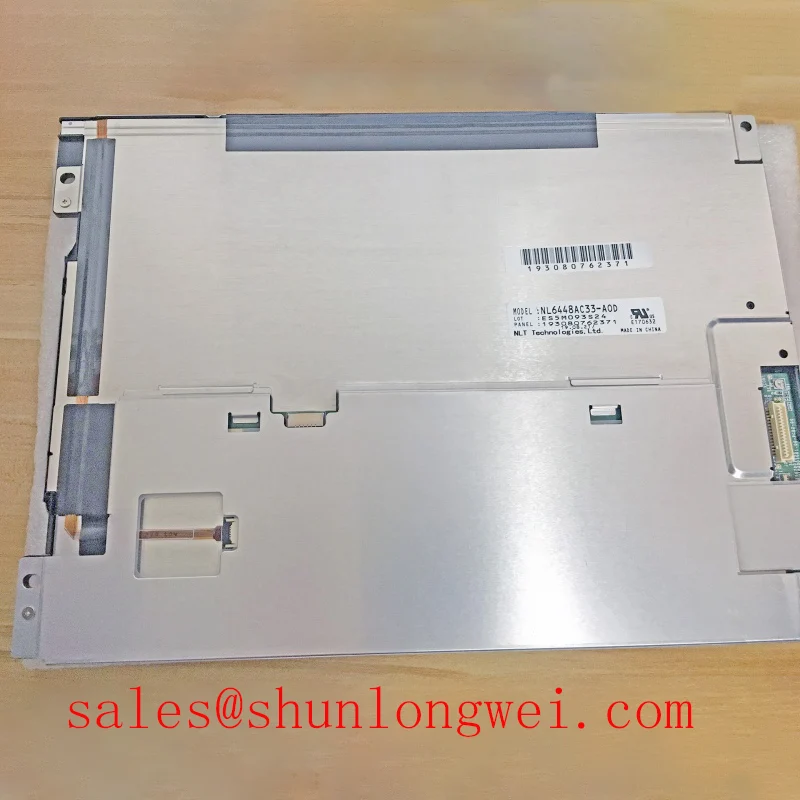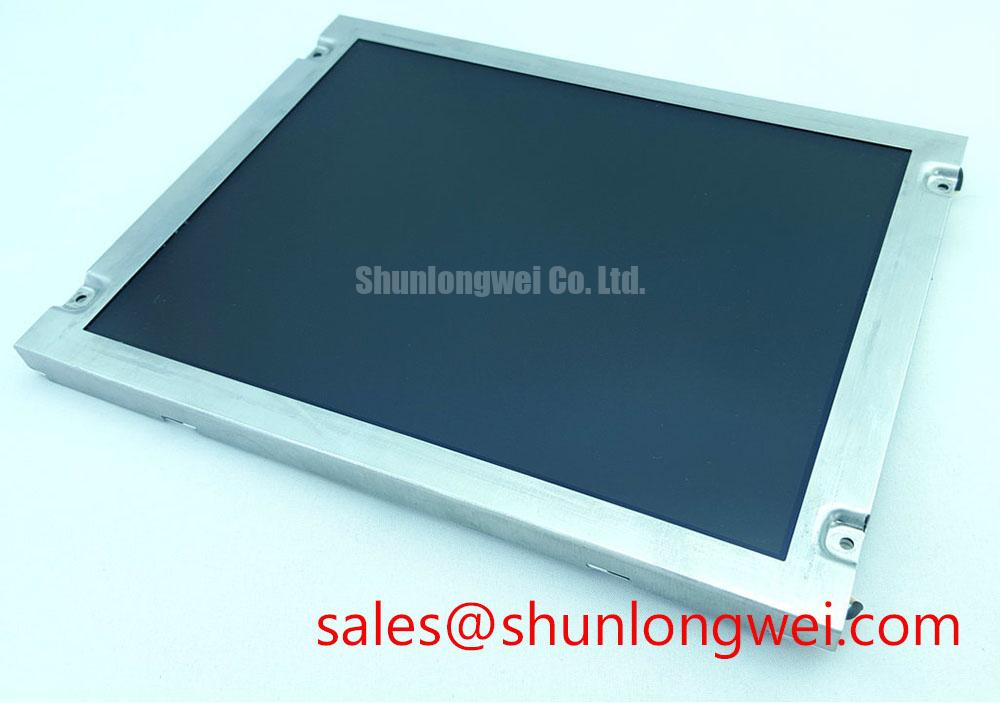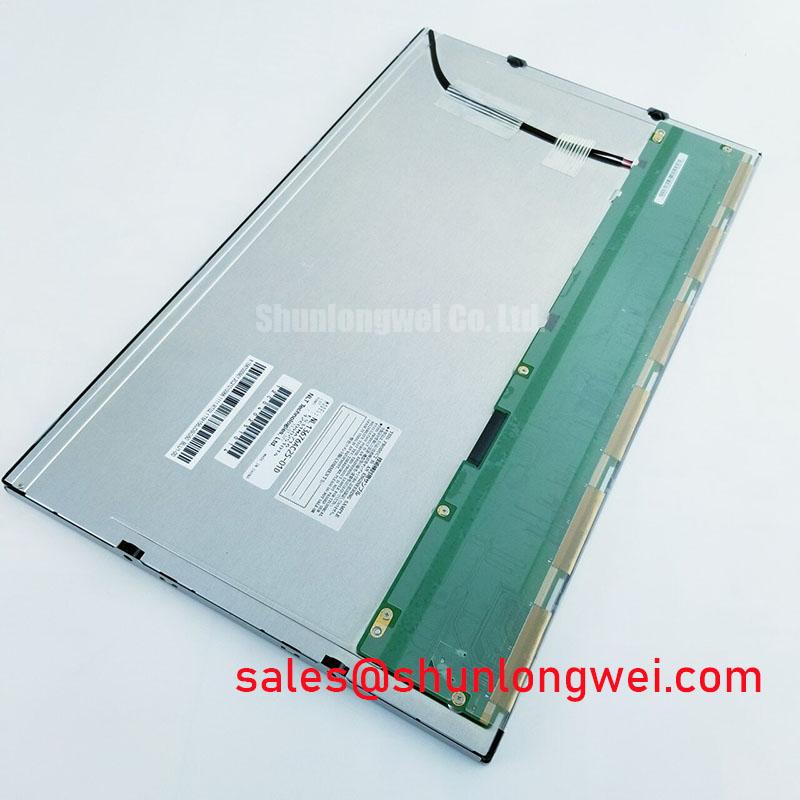Content last revised on November 21, 2025
NEC NL10276AC30-03A: A 15.0-inch XGA Display Engineered for Legacy System Integration
Introduction and Key Highlights
Delivering Proven Performance for Industrial HMI and Control Systems
The NEC NL10276AC30-03A is a 15.0-inch a-Si TFT-LCD module engineered for long-term service in industrial applications requiring consistent visual performance and robust construction. It delivers a classic 1024x768 XGA resolution with a conventional 4:3 aspect ratio, making it a prime candidate for upgrading or maintaining legacy systems without extensive mechanical redesign. Key specifications include: 1024x768 pixels | 200 cd/m² Brightness | Analog RGB Interface | Integrated CCFL Backlight. This display provides proven reliability and straightforward system integration. A critical benefit for engineers is its standard analog interface, which simplifies connectivity with a wide range of existing industrial controllers and single-board computers. For industrial control panels where readability under typical indoor factory lighting is sufficient, this display's brightness and contrast are perfectly matched to the task.
Key Parameter Overview
Specifications Tailored for System Longevity and Compatibility
The parameters of the NL10276AC30-03A reflect a focus on reliability within established industrial environments. The combination of a standard voltage input and a familiar interface minimizes the design effort required for system integration or replacement tasks.
| Parameter | Specification | Engineering Value |
|---|---|---|
| Screen Size | 15.0 inches | Provides a large, clear viewing area suitable for complex HMI layouts and data visualization in industrial machinery and process control. |
| Resolution | 1024x768 (XGA) | A standard resolution that ensures crisp rendering of text, graphics, and schematics, offering compatibility with a vast library of existing software and GUIs. |
| Interface | Analog RGB | Ensures direct compatibility with a wide range of legacy and embedded systems, simplifying upgrades and reducing the need for signal conversion hardware. |
| Brightness | 200 cd/m² (Typ.) | Offers sufficient luminance for indoor industrial environments like control rooms and factory floors, balancing readability with power consumption. Think of it as the interior lighting of an automobile—clear and functional, without being overpowering. |
| Contrast Ratio | 200:1 (Typ.) | Provides clear differentiation between light and dark elements, crucial for displaying detailed process diagrams and alphanumeric data accurately. |
| Operating Temperature | 0°C to 50°C | Supports reliable operation in controlled indoor industrial settings, covering the typical environmental conditions of factory floors and control centers. |
| Backlight System | CCFL with Integrated Inverter | A complete, self-contained illumination solution that simplifies power supply design. The integrated inverter means designers do not need to source and qualify a separate high-voltage component. |
Application Scenarios & Value
System-Level Benefits in Legacy and Retrofit Applications
The NL10276AC30-03A is best suited for applications where maintaining system continuity and minimizing requalification costs are paramount. Its design directly addresses the challenges faced by engineers managing the lifecycle of long-established industrial equipment.
A primary high-fidelity engineering scenario is the refurbishment of aging CNC (Computer Numerical Control) machine interfaces. Many CNC controllers from the past two decades were designed around a 15-inch 4:3 display with an analog RGB input. When these original displays fail, finding a form, fit, and function replacement is critical to avoid costly controller and software upgrades. The NL10276AC30-03A's physical dimensions, resolution, and native analog interface allow for a near drop-in replacement, minimizing machine downtime and eliminating the engineering hours needed to validate a modern digital interface like LVDS or eDP. The display's reliable CCFL backlight provides the expected visual characteristics that machine operators are accustomed to, ensuring a smooth transition. For systems demanding higher brightness or wider operating temperatures, a potential upgrade path could involve a more modern panel such as the NL10276AC30-42D, which features LED backlighting and enhanced performance characteristics.
Frequently Asked Questions (FAQ)
What is the key advantage of the Analog RGB interface on the NL10276AC30-03A?
Its primary advantage is backward compatibility. This interface allows for direct, plug-and-play integration with a multitude of industrial controllers, PCs, and embedded systems that predate modern digital standards, significantly simplifying the repair and upgrade process for legacy equipment.
Is the 200 cd/m² brightness sufficient for industrial use?
For its intended applications—such as indoor factory automation, process control terminals, and test equipment—a brightness of 200 nits is entirely adequate. It provides clear visibility under typical ambient factory lighting without contributing to excessive power consumption or heat generation. It is not intended for direct sunlight applications.
Does this module include everything needed for the backlight to operate?
Yes, the NL10276AC30-03A includes an integrated CCFL (Cold Cathode Fluorescent Lamp) backlight system complete with the necessary inverter. This means designers only need to provide a standard low-voltage DC input (12.0V Typ.), simplifying the power supply and system integration.
How does the 1024x768 resolution benefit industrial HMI design?
The XGA resolution offers a significant improvement in detail over older VGA (640x480) or SVGA (800x600) panels, allowing for more complex and information-dense GUIs. It enables clearer display of trend graphs, multiple process parameters, and detailed schematics on a single screen, enhancing operator efficiency.
What does the "a-Si TFT" technology imply for this display's performance?
a-Si (Amorphous Silicon) is a mature, proven TFT-LCD technology known for its reliability and cost-effectiveness. For an industrial panel like this, it signifies a stable and well-understood manufacturing process, leading to consistent performance and a long operational lifespan suitable for the industrial sector. It provides the dependable visual characteristics required for monitoring and control tasks.
Technical Deep Dive
Implications of the CCFL Backlight and TN Display Technology
Understanding the core technologies of the NL10276AC30-03A—a CCFL backlight and a TN (Twisted Nematic) panel—is key to deploying it effectively. The CCFL backlight, while a legacy technology, is valued in certain sectors for its stable color spectrum over its operational life and its proven durability. Its integrated inverter is a crucial feature for system reliability, as it is factory-matched to the lamp's specific electrical requirements, removing a common point of failure associated with third-party inverter boards.
The display utilizes TN panel technology, which is engineered for fast response times. This characteristic is beneficial in applications displaying rapidly changing numerical data or simple animations, as it minimizes motion blur. While modern technologies like IPS (In-Plane Switching) offer wider viewing angles, the specified viewing angles of the NL10276AC30-03A are well within the typical "straight-on" operator viewing cone for fixed-mount HMIs and control panels. The combination of these mature technologies results in a display that is both cost-effective and highly dependable for its specific target applications.
An Engineer's Perspective
From an engineering standpoint, the NEC NL10276AC30-03A serves as a critical lifecycle management component. Its value is not in cutting-edge specifications but in its ability to provide a stable, reliable, and compatible solution for an extensive installed base of industrial machinery. The decision to specify this panel is often driven by total cost of ownership; the cost and risk associated with re-engineering a system's HMI to accommodate a different form factor or digital interface far outweigh the benefits of a newer display technology. This module is a strategic choice for maintaining operational continuity and maximizing the return on investment of existing capital equipment.











